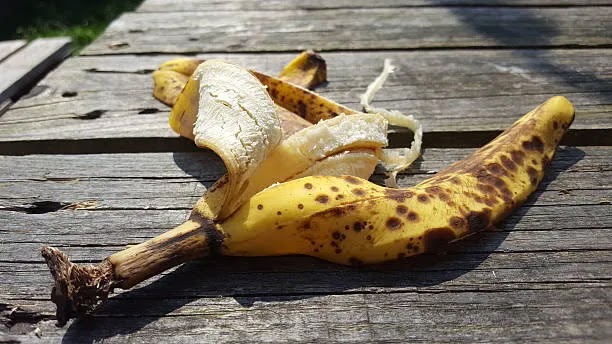While some people find the idea of eating a banana peel disgusting, it is a common ingredient in many cuisines around the world.
This article examines whether banana peels can be eaten and how they may affect your health.
Benefits of Banana Peel
Banana peels makeup around 35% of the ripe fruit and are frequently thrown rather than consumed.
On the other hand, using the peel is an excellent strategy to minimize food waste while providing your diet with additional vitamins and minerals.
Banana peels are high in potassium, dietary fiber, polyunsaturated fats, and vital amino acids, among other nutrients.
Fiber, in particular, has been shown to help with digestion, blood sugar control, and heart health.
On the other hand, potassium can help you maintain healthy blood pressure, prevent bone loss, and lower your chance of kidney stones.
Additionally, one test-tube study discovered that banana peels are high in antioxidants, with unripe banana peels containing the most.
According to some studies, antioxidants can lower inflammation and protect against chronic diseases like heart disease, cancer, and diabetes.
Potential downsides
Pesticides are frequently utilized in the production of conventional bananas.
While this isn't a big deal if you're eating the fruit, it's something to think about if you're eating the peel as well. Pesticide exposure has been related to several adverse health impacts, including an increased risk of autism, cancer, high blood pressure, diabetes, and dementia.
To avoid these harmful health impacts, regulatory authorities such as the United States Department of Agriculture (USDA) and the Food and Drug Administration (FDA) closely monitor pesticide levels in the food supply.
To help reduce pesticide exposure, choose organic bananas if possible and adequately wash the skin before eating them.
Many people dislike banana peels due to their bitter flavor and tough texture.
Choosing ripe bananas and properly cooking them can help improve the taste and texture of the bananas, making them more desirable.
How to eat banana peels
When first starting, select highly ripe bananas, as their skins are frequently sweeter and thinner, making them more appealing.
Remove the stem and carefully wash the banana peel to prepare it.
Then, combine it with your favorite smoothie recipe or sneak it into your next loaf of banana bread.
You may also soften the texture of the peels by baking, boiling, or frying them, making them simpler to eat.
In your favorite meatless recipes, banana peels cooked in water make an excellent substitute for bacon or pulled pork.
Additionally, they can be used in stir-fries, curries, and sandwiches to help improve the dish's nutritional value.
Last but not least
Banana peels can be eaten in various ways as part of a healthy diet.
They can help avoid food waste while also providing a variety of essential nutrients such as fiber, potassium, and antioxidants.
In addition, banana peels can give a unique flavor to stir-fries, smoothies, and sandwiches while also increasing their nutritional value.
Related: One Major Side Effect of Eating Bananas Every Day, Say Experts


